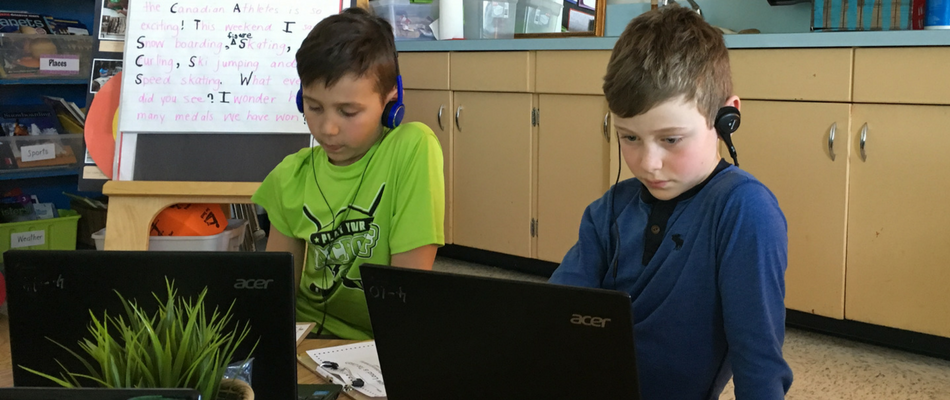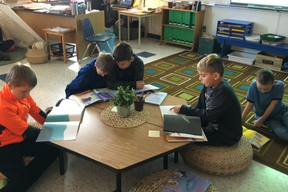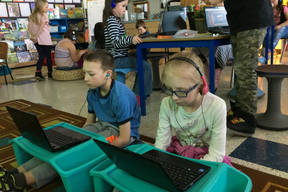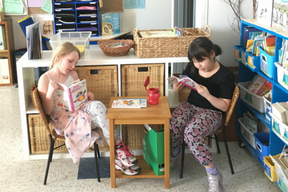Cory Kubinec teaches Grade 3 at École Westlock Elementary School and she recently incorporated the concept of flexible seating into her classroom. Rather than having students assigned to desks, flexible seating allows her students to choose where they work and who they work with throughout the day.
Why flexible seating?
Kubinec used flexible seating in her Kindergarten classroom — a natural and perfect place for the concept. When she moved to Grade 3, she brought many of the Reggio and flexible seating ideas with her. She got ideas for flexible seating from other teachers on Instagram who were already using it in higher grades. Ultimately, flexible seating gives students the ability to sit and work where it’s most comfortable for them. It also helps children work collaboratively.
“I started to notice where my students wanted to work — quite often they would choose to sit on the carpet or at tables, and they often wanted to work together. We talked about it as a group, that it was sort of a goal of mine to have no desks in the classroom. The kids were very excited about the idea. Once they saw it and figured out how their desk supplies were now stored in the room, they settled in really well,” says Kubinec.
What does flexible seating look like?
Flexible seating in Kubinec’s classroom includes things like stools (Hokki and IKEA), bean bag chairs, carpets, lap desks, clipboards, lower tables, higher tables, benches, cushions and floor seating. Justine Podolski, the program assistant who works in Kubinec’s classroom, was instrumental in making the vision a reality. Kubinec says, “Justine was an enormous help finding the right furniture and fixings to create the environment I was looking for.”
Why students love it
Here’s are some of her students’ comments about flexible seating:
- We work together to make our room ship-shape
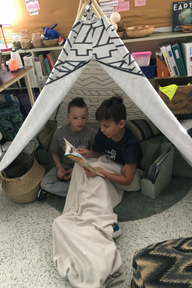
- Our room is so neat we do not get confused
- I like flexible seating because you can find a comfortable spot
- Our room is more organized
- I like to put the wicker chair backwards and sit on it to relax my neck
- We are making new friends every day
- You can move around a lot to get comfortable
- You can sit close to the ground or up high
- We can solve our problems easily
- Flexible seating allows me to make a new choice every day
- Flexible seating is friendly
- When I’m wiggly I like to sit on Hokis
- We can use cushions, clipboard and lap desks on the carpet
- We use teamwork to get our supplies
“Our classroom is better than it’s ever been,” says Kubinec. “It’s peaceful. The students seem to respect their space more. They take the initiative to keep the room clean — cleaning up messes quickly and wiping down all the tables before and after lunch. I’m really glad we made the move to do this and I think it could work in any grade.”
Thank you to Cory Kubinec and her Grade 3 class for sharing their story with us. There are other teachers at École Westlock Elementary School who have incorporated flexible seating into their classrooms, and we hope others will be inspired by her story.
Flexible seating is just one of the ways we are working to support student diversity and mental health — both of which are priorities for the school division.

